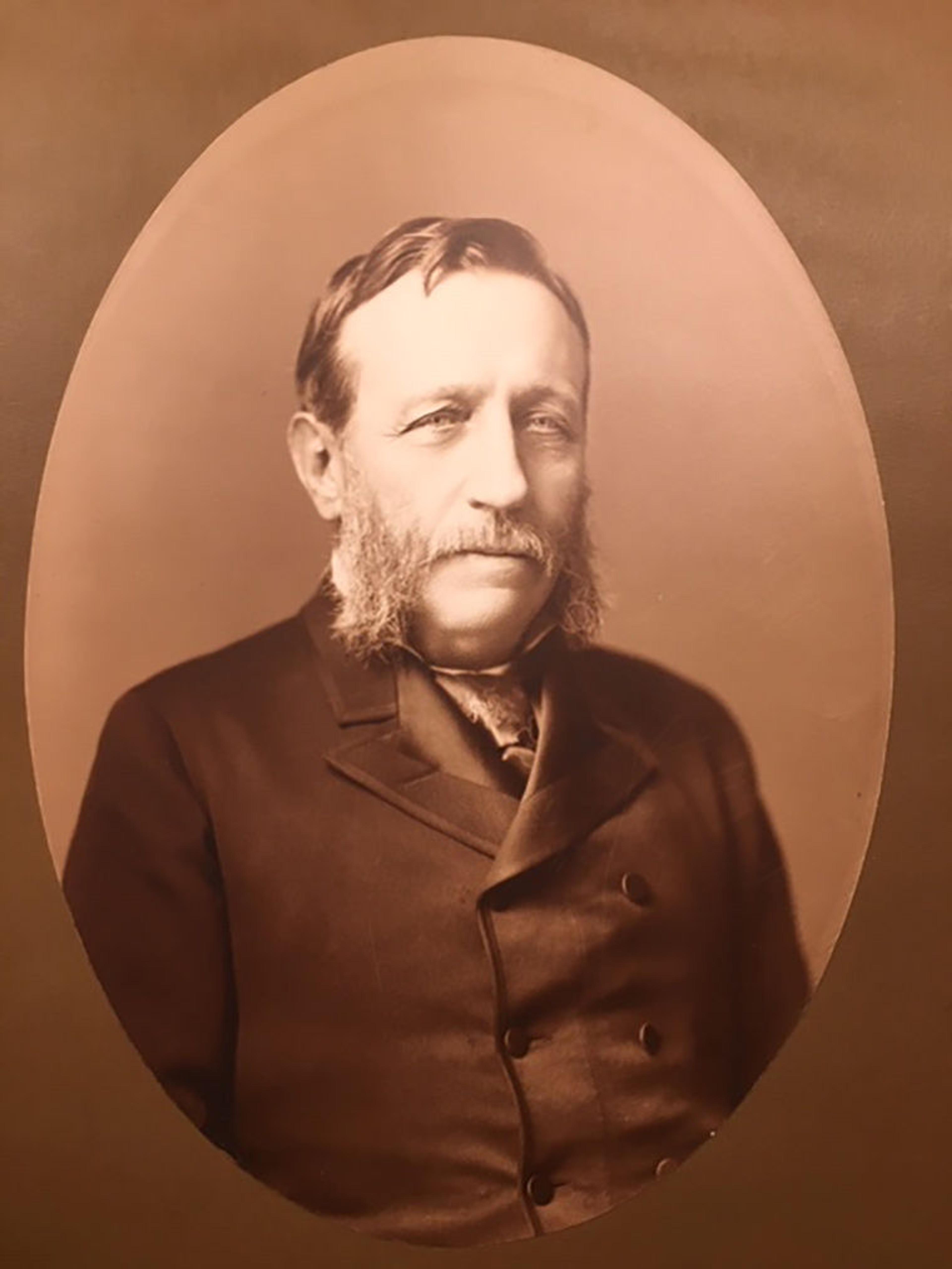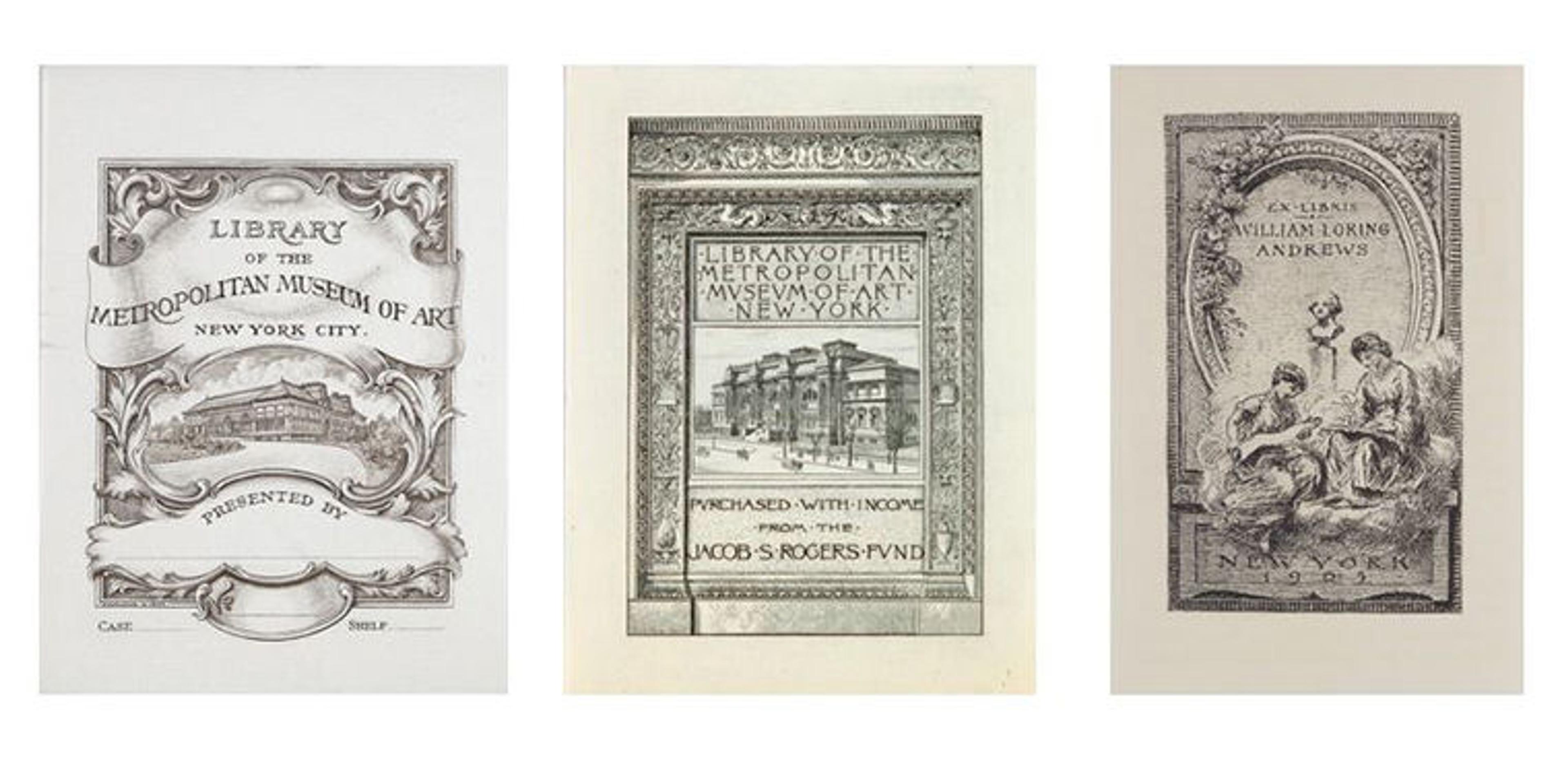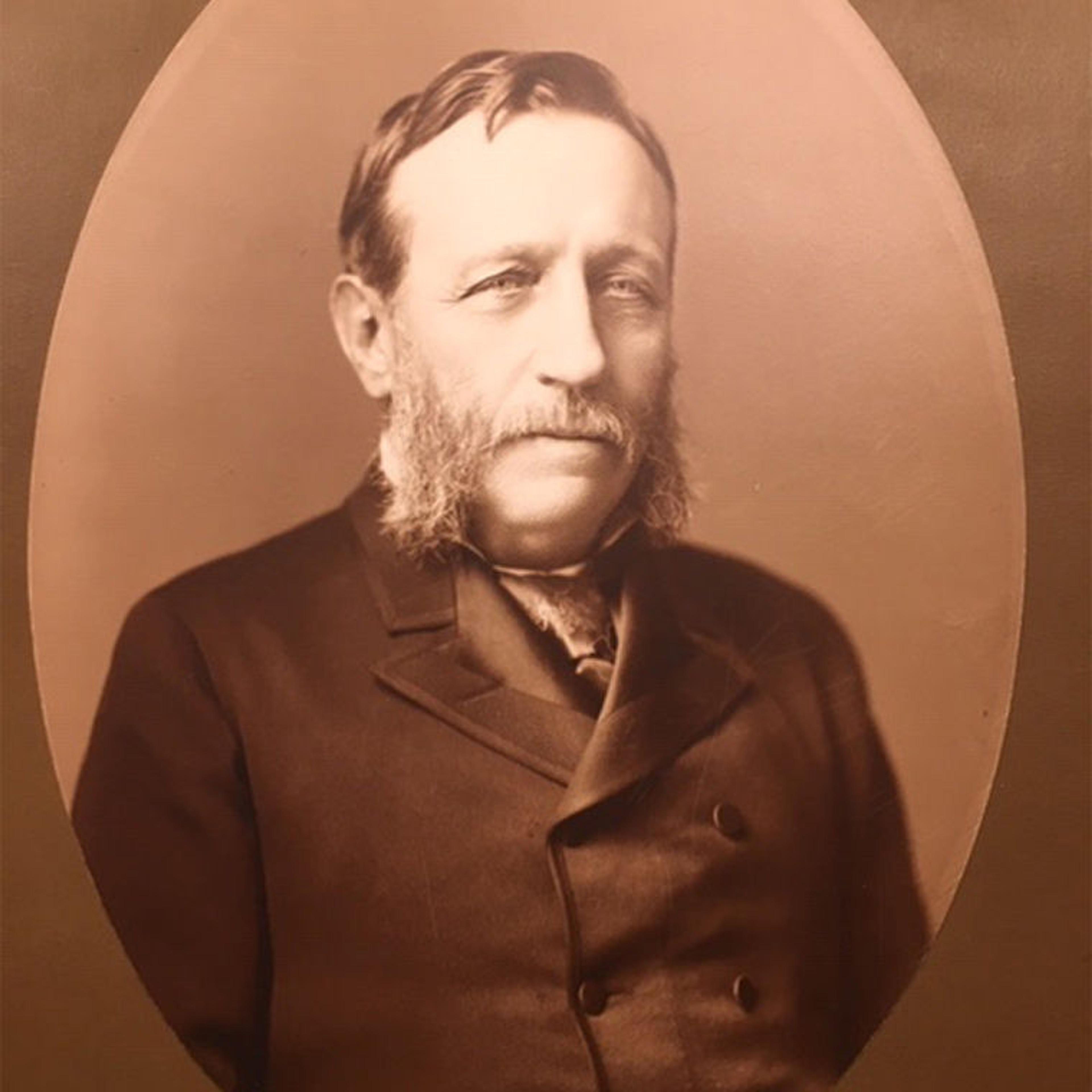
Portrait of William Loring Andrews
There are two key texts in the history of The Met's library. The first is the charter, from 1870, which announces the intention "of establishing and maintaining in said city a Museum and library of art, of encouraging and developing the study of the fine arts . . ." The first trustees were ambitious in their aspirations and believed that building a great museum and library went hand in hand.
The other key text is a letter from William Loring Andrews to President Cesnola, dated August 28, 1880, just five months after the opening of The Met's first building in Central Park, designed by Calvert Vaux and Jacob Wrey Mould. Andrews informed Cesnola, "I shall be back in town by the middle of September with plenty of leisure time to do what I can to be at the Museum and especially to try to work up the library—would like to find someone to start it with 10,000 dollars." Andrews had retired from his father's hide and leather business just two years earlier. It was The Met's splendid good fortune that he had time on his hands. He was appointed Librarian in 1880, and with the hiring of The Met's first salaried full-time librarian, William Clifford, who held the position from 1895 to 1941, Andrews was appointed Honorary Librarian. He was the library's great advocate for forty years.
Andrews published thirty-four books, most on bookish themes and the history of New York City. He was the author of all but ten, and he selected the paper, typography, and bindings for all of them. E. D. French and Sidney L. Smith provided tailpieces, initial letters, and other elements for his books. In 1885, Andrews asked French to create The Met library's first bookplate, and in 1906, Smith created one for the Rogers fund. Like French, Smith was one of the great bookplate engravers of the period and designed Andrew's own personal bookplate.

Three early Metropolitan Museum of Art library bookplates
Andrews was displeased with commercial publishing of his time. He considered wood-pulp paper an abomination, largely because he felt sure it would not last, and disapproved of glazed and clay-coated paper, a feature of illustrated books then and now. He preferred handmade paper and books with good bindings. His initial plan was to have The Met's library consist of rare, early printed books and manuscripts. As Clifford recounted in Andrew's 1921 memorial volume, "When he found that such was not practical, and that the needs of the Museum required a working library, he sacrificed his own wishes and encouraged the building up of the collection of art books which is today the most important one in the United States."
During his long tenure with the library Andrews also served as Trustee and member of the Executive Committee, Finance Committee, the Library Purchasing Committee, the Committee on Oriental Purchases, and with Robert Hoe, Jr., the greatest book collector of the period, the Committee on Art-Schools and Industrial Art. In 1901, at Cesnola's request upon the death of Hiram Hitchcock, Andrews reluctantly served as Treasurer, writing to Henry Marquand upon his appointment, "I have been out of active business for so long that financial matters will come somewhat strange and new to me." He was an active and an exceptionally well-placed advocate for the library, and in annual reports and through other means regularly made the case for larger appropriations.
Andrews labored over his 1905 report on the library, which was published as a supplement to the Museum's Bulletin in March of that year. Both Clifford and Henry Watson Kent, Associate Secretary at The Met and a former student of Melvil Dewey at Columbia College, took care to review it. Andrews noted the support shown by fellow Trustee Herber Bishop, who established a five-thousand-dollar endowment, and Henry Marquand who added two thousand dollars to the library's endowment in 1883. He then expressed the "pressing demand for books for the library." He beseeched both Trustees and Members to "supply the immediate want." There is a mix of encouragement and admonishment in his observation that "Expenditures of this nature [for library acquisitions] are among the constant necessities of such an institution; but the Trustees have been compelled to confine their purchases to the lowest level of absolute need." His entreaties were successful, and a list of gifts and current subscriptions accompanied the article. As now, the library was an active site for research. Andrews noted that attendance was increasing steadily "and is at present more than one hundred percent greater than it was only six months ago."
Andrews was a fundamental force in the early days of The Met, and he was the pivotal figure in the development and collection growth at The Met's great library. At Andrews's memorial, Robert Weeks de Forest, The Met's President, shared an anecdote that expressed Andrew's devotion to The Met. He said, "I shall never forget Mr. Andrews telling me of how the Museum was moved from Fourteenth Street to the first building in the Park and how he actually carried many of the things in baskets, himself, to prevent harm coming to them." Another speaker mentioned his energetic nature (his preferred mode of transport from his home on 38th Street to The Met was bicycle) and noted, "There was a tireless energy displayed, an energy born of zeal and accomplishment." The Met's library is one of his great accomplishments, secured on the solid foundation built by Andrews that has supported sustainability alongside exceptional growth.
For more in this series on the history of The Met's libraries, click here.
With thanks to Holly Phillips and Sophia Alexandrov for their invaluable assistance.
